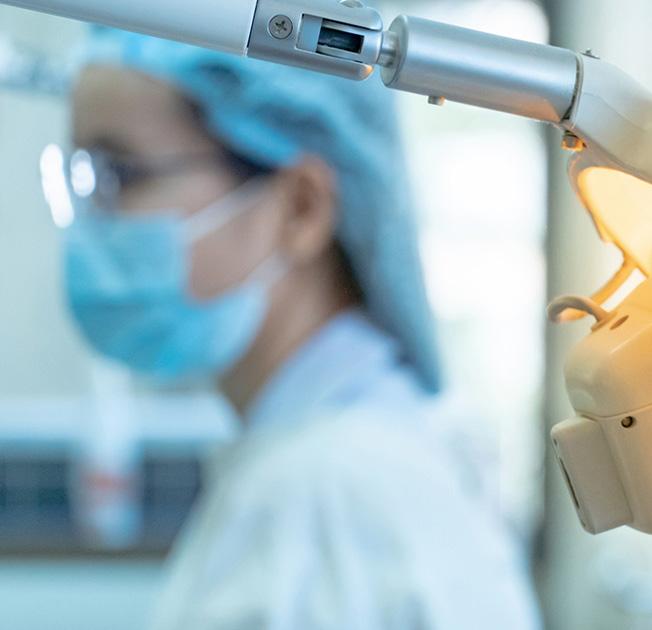
3 minute read
Regulatory Compliance —Who Determines Dental Infection Control Standards?
CDA Practice Support
Four months after a national emergency for the novel coronavirus was declared, dental infection control procedures were still a work in progress. CDA Practice Support heard from dentists who were confused after hearing about and reading the conglomeration of guidance and orders issued by national, state and local government agencies as well as those published by CDA and the American Dental Association. For example, some questioned the recommendation to use respirators and others asked if complying with certain recommendations, such as installing sneeze guards, was mandatory.
Advertisement
Some of this confusion originates from a lack of basic knowledge about the roles of respective agencies and how they influence each other. This article briefly describes their scopes of work as they relate to infection control in dentistry.
Most dental health care workers know that the U.S. Food and Drug Administration (FDA) clears medical and dental devices for use in the U.S. and the Centers for Disease Control and Prevention (CDC) issues infection control guidance. However, the work of a CDC department, the National Institute of Occupational Safety and Health (NIOSH), is not as well understood. NIOSH conducts research and makes recommendations for the prevention of work-related injuries and illness. Like the CDC, it is not an enforcement agency and does not issue regulations. It does issue recommendations that can be adopted by other entities to be part of regulations enforced by the U.S. Occupational Safety and Health Administration (OSHA) or its state counterpart Cal/OSHA.
NIOSH’s role in approving respiratory protection equipment became more important in dentistry because of the shortage of the NIOSHapproved, FDA-cleared “disposable filtering facepiece respirator” commonly known as the surgical N95. It is standard health care practice to utilize FDAcleared respirators, and the FDA does not clear every NIOSH-approved respirator. Because the pandemic created a severe shortage of surgical N95s, the FDA issued a series of emergency use authorizations allowing health care providers to use other NIOSH-approved respirators and specified respirators manufactured outside the U.S. that meet another country’s standards for respiratory protection. The emergency use authorizations allowed health care providers to use for patient care NIOSH-approved nonsurgical N95s, NIOSH-approved half- and full-face elastomeric respirators and specified KN95s and other respirator models manufactured outside the U.S. [1] Use of NIOSH-approved powered air purifying respirators for particulate protection does not require an FDA emergency use authorization. [2] Additionally, the FDA issued emergency use authorizations for respirator decontamination systems. Because of the emergency use authorizations, health care workers have greater options for personal protective equipment.
An FDA guidance [3] issued several years ago and unbeknown to most dentists required dental practices to change the way they managed dental burs, which had not been labeled as one-time use devices until then. The FDA directed device manufacturers to provide reprocessing instructions for their devices. A device without reprocessing instructions would be considered a single-use device. The CDC recommends and the Dental Board of California requires that single-use devices be disposed of after use; reprocessing them is not permitted. The dental board did not have to change its regulations to mandate the disposal of dental burs after a single use because the FDA changed its standard.
Both the dental board and Cal/OSHA look to the CDC recommendations as a starting point for creating infection control regulations. Although neither state agency has adopted COVID-19-specific regulations, Cal/ OSHA can enforce a safety standard by utilizing the aerosol transmissible disease (ATD) and injury and illness prevention (IIP) regulations and CDC COVID-19 guidance for dentistry. The IIP regulation, which is unique to California, requires an employer to identify and evaluate workplace hazards, to mitigate unsafe or unhealthy conditions, to implement safe work practices, to educate employees and to investigate injuries and illnesses. Under the ATD regulation, a dental practice is required to include in its IIP program specific steps to prevent an individual with an ATD from being treated. If the practice fails to do so, it must comply with the same requirements as larger health care facilities — mandatory vaccinations and testing and creation of a written ATD plan, for example.
REFERENCES
1. U.S. Food and Drug Administration. Personal protective equipment emergency use authorizations. www.fda.gov/ medical-devices/coronavirus-disease-2019-covid-19- emergency-use-authorizations-medical-devices/personalprotective-equipment-euas. Accessed July 13, 2020.
2. U.S. Food and Drug Administration letter to the Centers for Disease Control and Prevention, March 28, 2020. www.fda.gov/media/135763/download.
3. U.S. Food and Drug Administration. Reprocessing medical devices in health care settings: Validation methods and labeling. March 2015. www.fda.gov/regulatory-information/ search-fda-guidance-documents/reprocessing-medical-deviceshealth-care-settings-validation-methods-and-labeling.
Regulatory Compliance appears monthly and features resources about laws that impact dental practices. Visit cda.org/ practicesupport for more than 600 practice support resources, including practice management, employment practices, dental benefit plans and regulatory compliance.







